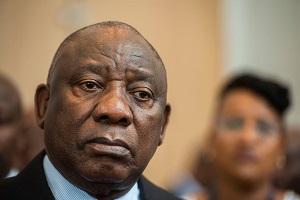By Naseerah Nanabhai
28/10/2019
A protest is often defined as an action expressing disapproval of or objection to something. Protests by people are often provoked by conditions such as discrimination, poverty, high unemployment, poor schools, poor healthcare, housing inadequacy and police brutality and bias.
Presently, we see several ongoing protests in Hong Kong, Spain, Lebanon and Chile.
In Hong Kong, dissenters are against proposals to allow extradition to mainland China. Critics feared this could undermine the city’s judicial independence and endanger protestors. The protests began in June and have escalated. After the bill was suspended, protesters feared it could be revived, and demonstrations continued with a call for it to be withdrawn completely.
In Spain, protests are mostly in the Catalonia region. Catalan nationalists have long complained that their region, which has a distinct history dating back almost 1,000 years, sends too much money to poorer parts of Spain via taxes which are controlled by Madrid. Catalonia is a wealthy region, which is home to about 7.5 million people, with their own language, parliament, flag and anthem.
In Lebanon, protesters are demanding an end to economic woes and perceived government corruption. The protests have spread steadily across the country since people took to the streets in response to a proposed tax on WhatsApp calls and other messaging services. So far, there have been five days of protests that have paralysed the nation.
In Chile, protesters are against an imposed increase in subway fares. The fare hike sparked off major protests that included rioting which caused millions of dollars in damage as buses were burnt, subway stops, office buildings and stores vandalised and brought transportation in the country to a halt, making it difficult to commute. Although the President of Chile, Sebastian Pinera, tried to diffuse the protests, they continue.
Commonly, protesters may organise a protest as a way of publicly making their opinions heard in an attempt to influence public opinion or government policy. These are non- violent customs of expression. But more often, we see protesters undertaking a direct action in an attempt to directly enact desired changes themselves. These are violent protests and can cause irreparable damage to the country, its” infrastructure and/or citizens.
Protests are meant to be part of a systematic and peaceful nonviolent campaign to achieve a particular objective. When they involve the use of pressure as well as persuasion, they go beyond mere protest and maybe better described as cases of civil resistance or nonviolent resistance.
When protests go beyond civil resistance and begin to initiate and tolerate violence, they can lead to civil war and negatively impact the country. These are characterised by acts of vandalism, riots and bombing.
Protests that are associated with mass movement and are intended to cause a total shutdown of economic activities, by way of coercion and violence, significantly impact the country’s economy.
Even though protests are an expression of bearing witness on behalf of an express cause by words or actions with regard to particular events or policies, the accomplishments of a protest need to exceed its devastation.







0 Comments